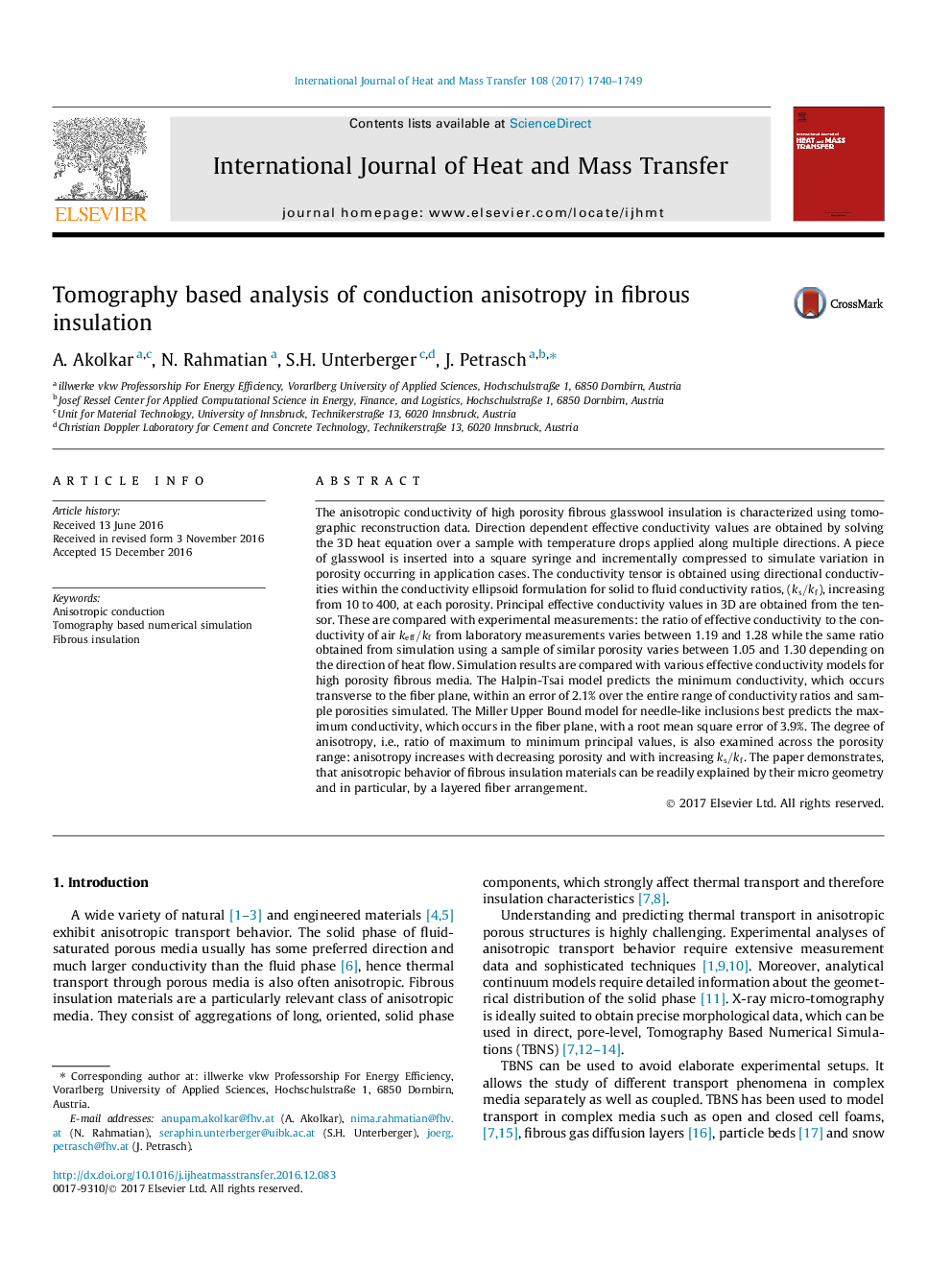| کد مقاله | کد نشریه | سال انتشار | مقاله انگلیسی | نسخه تمام متن |
|---|---|---|---|---|
| 4994399 | 1458033 | 2017 | 10 صفحه PDF | دانلود رایگان |
عنوان انگلیسی مقاله ISI
Tomography based analysis of conduction anisotropy in fibrous insulation
ترجمه فارسی عنوان
تجزیه و تحلیل بر اساس توموگرافی آنیزوتراپی هدایت در عایق فیبر
دانلود مقاله + سفارش ترجمه
دانلود مقاله ISI انگلیسی
رایگان برای ایرانیان
کلمات کلیدی
هدایت انحصاری، شبیه سازی عددی مبتنی بر توموگرافی، عایق فیبر،
موضوعات مرتبط
مهندسی و علوم پایه
مهندسی شیمی
جریان سیال و فرایندهای انتقال
چکیده انگلیسی
The anisotropic conductivity of high porosity fibrous glasswool insulation is characterized using tomographic reconstruction data. Direction dependent effective conductivity values are obtained by solving the 3D heat equation over a sample with temperature drops applied along multiple directions. A piece of glasswool is inserted into a square syringe and incrementally compressed to simulate variation in porosity occurring in application cases. The conductivity tensor is obtained using directional conductivities within the conductivity ellipsoid formulation for solid to fluid conductivity ratios, (ks/kf), increasing from 10 to 400, at each porosity. Principal effective conductivity values in 3D are obtained from the tensor. These are compared with experimental measurements: the ratio of effective conductivity to the conductivity of air keff/kf from laboratory measurements varies between 1.19 and 1.28 while the same ratio obtained from simulation using a sample of similar porosity varies between 1.05 and 1.30 depending on the direction of heat flow. Simulation results are compared with various effective conductivity models for high porosity fibrous media. The Halpin-Tsai model predicts the minimum conductivity, which occurs transverse to the fiber plane, within an error of 2.1% over the entire range of conductivity ratios and sample porosities simulated. The Miller Upper Bound model for needle-like inclusions best predicts the maximum conductivity, which occurs in the fiber plane, with a root mean square error of 3.9%. The degree of anisotropy, i.e., ratio of maximum to minimum principal values, is also examined across the porosity range: anisotropy increases with decreasing porosity and with increasing ks/kf. The paper demonstrates, that anisotropic behavior of fibrous insulation materials can be readily explained by their micro geometry and in particular, by a layered fiber arrangement.
ناشر
Database: Elsevier - ScienceDirect (ساینس دایرکت)
Journal: International Journal of Heat and Mass Transfer - Volume 108, Part B, May 2017, Pages 1740-1749
Journal: International Journal of Heat and Mass Transfer - Volume 108, Part B, May 2017, Pages 1740-1749
نویسندگان
A. Akolkar, N. Rahmatian, S.H. Unterberger, J. Petrasch,
